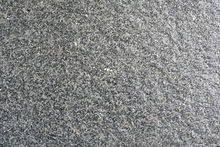Alta quartzite
The natural stone Alta quartzite (also called polar quartzite or northern quartzite ) is a metamorphite , a transformation rock . Alta quartzite is one of the micaceous quartzites . The deposit is located in Norway near the city of Alta and originated in the Proterozoic .
Origin and composition
This rock originated from a quartz-rich clayey sandstone, which under heat and pressure transformed into a new rock, a quartzite, with completely different technical properties. This quartzite is dark green and has a silvery shimmer. The clay minerals contained in the parent rock were transformed into light mica ( muscovite ) under heat and pressure, which appears on the cleavage surfaces. It is a so-called mica quartzite . The minerals chlorite and sericite color Alta quartzite green.
It has been extracted in open-cast mining in four different quarries since around the beginning of the 19th century. The occurrence reaches a thickness of 40 to 100 meters.
Properties and use
Alta quartzite can be split evenly into almost any panel thickness and, due to its excellent technical properties, is mostly used as abrasion-resistant floor and stair covering ; also for facade panels. If Alta quartzite is installed as a floor covering in a rough state, this natural stone achieves excellent slip resistance values . Since Alta-Quartzite has almost no water absorption, it is important to ensure that an adhesive bridge is applied to the underside of the slab when laying in the mortar . This may also be necessary at the joint edges of the panels.
Alta quartzite is also used as "roof slate" at the place of origin.
literature
- Karlfried Fuchs: Natural stones from all over the world, discover, determine, use . P. 146, Callwey, Munich 1997
